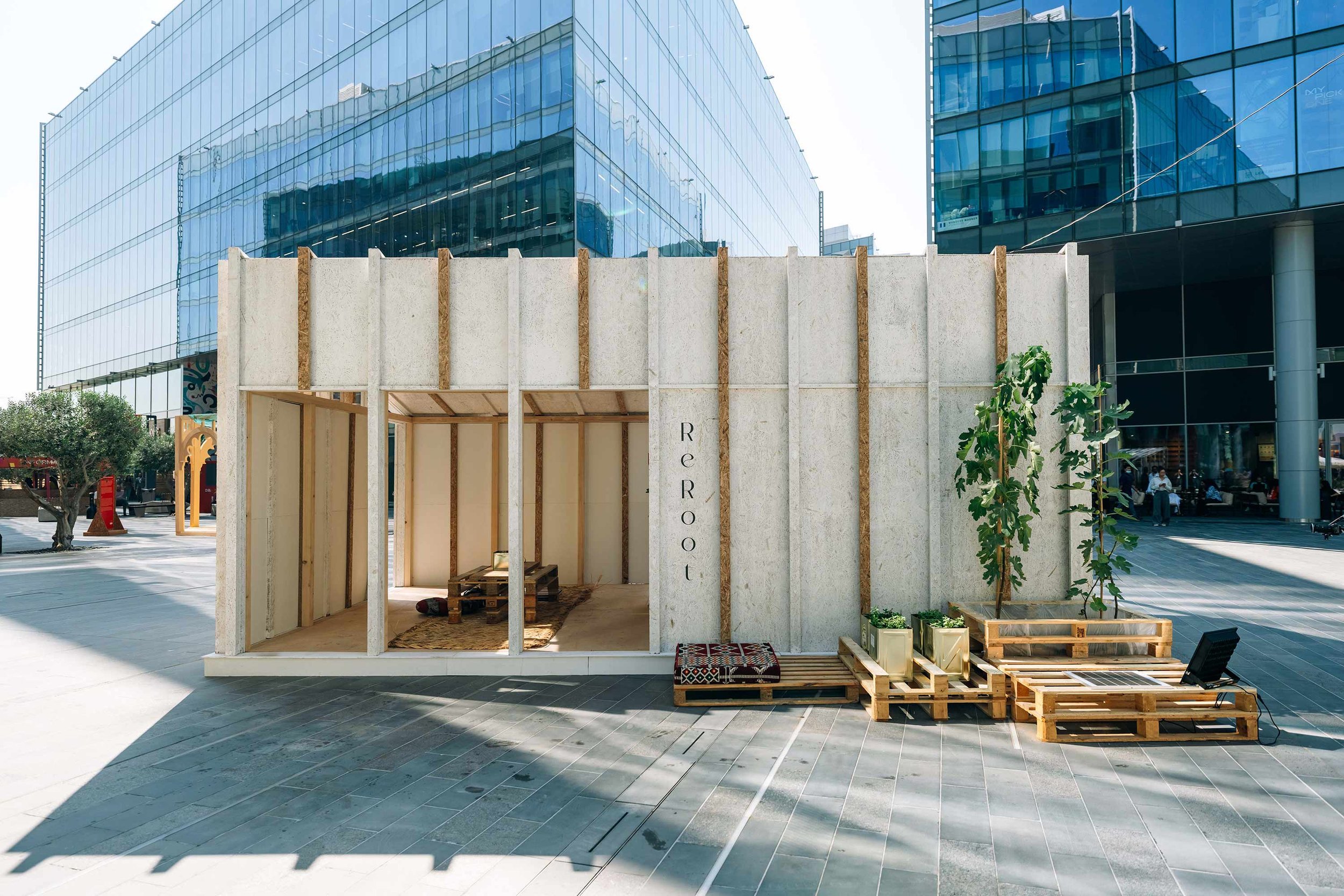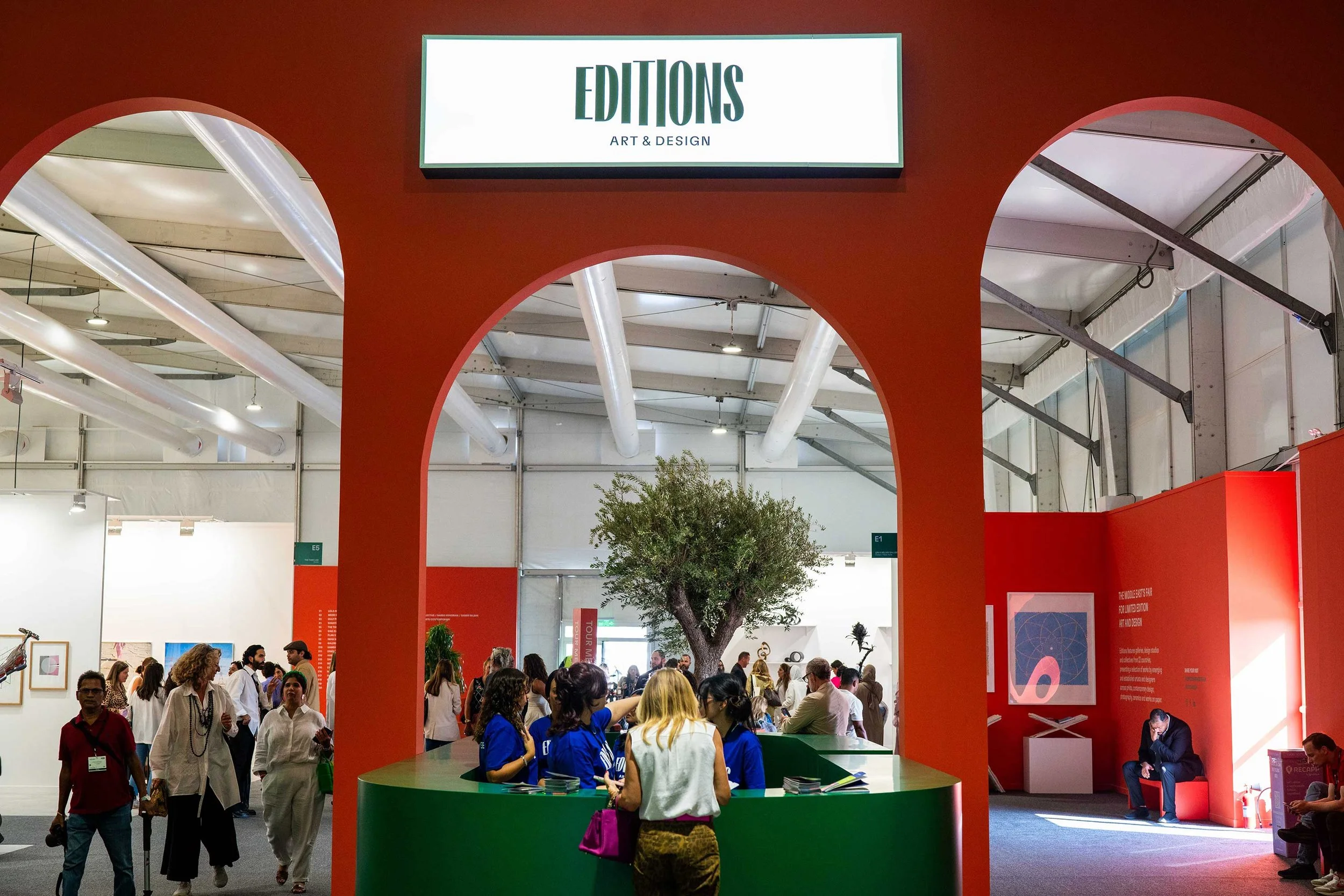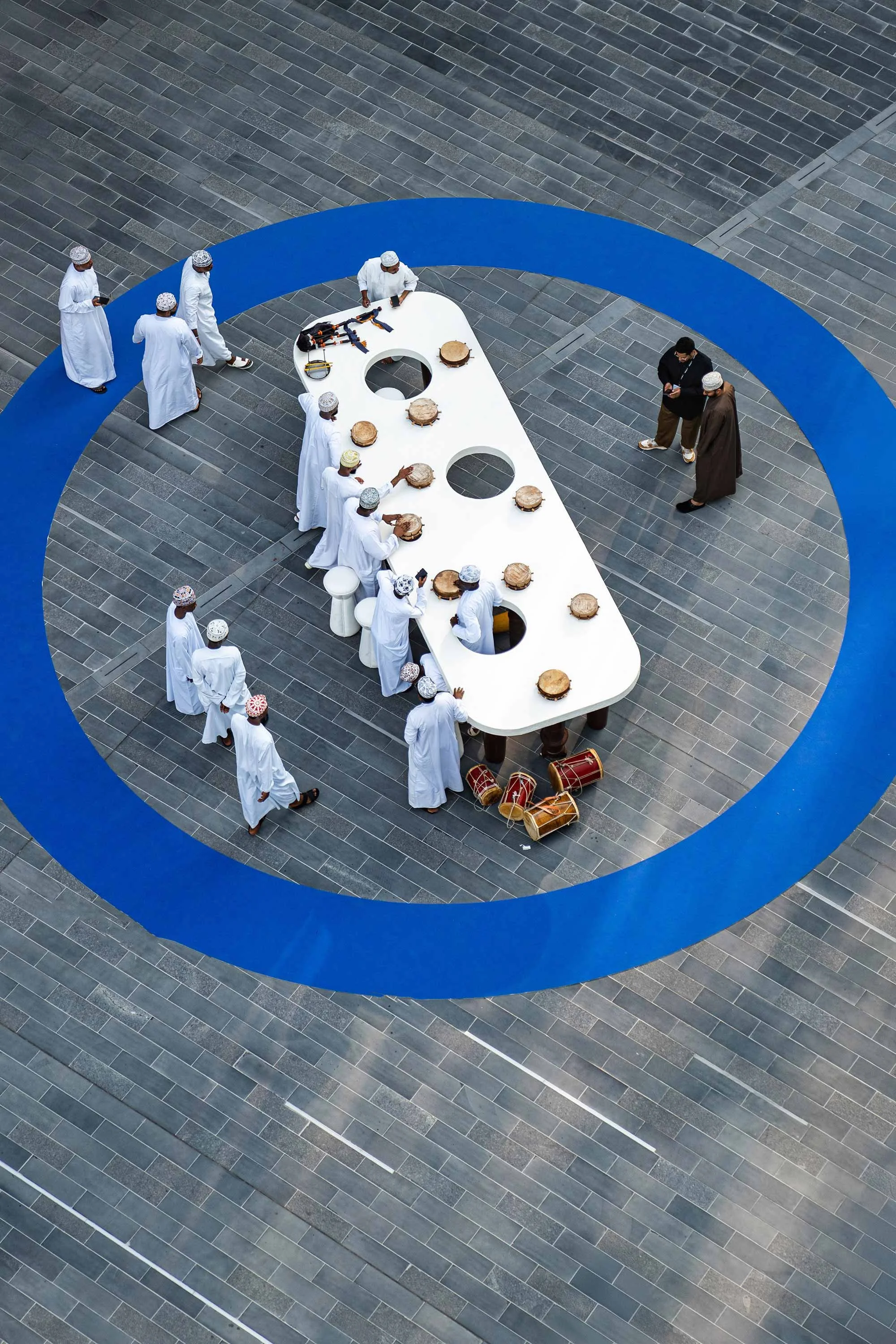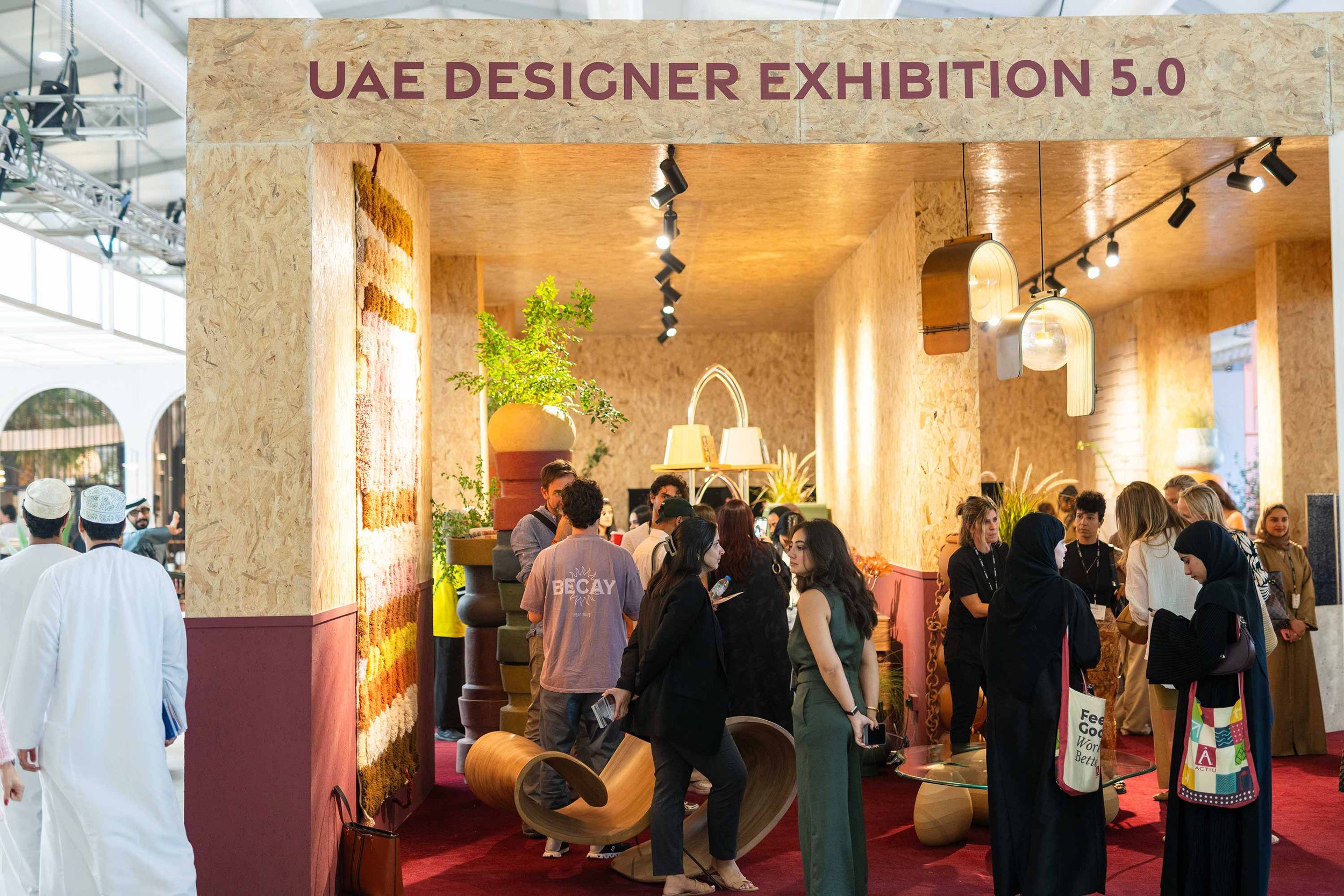Dubai Design Week Celebrates its Tenth Edition
A Present/Absent Mudhif by Ola Saad Znad
Dubai Design Week is both a window and a bridge into the region, connecting designers, architects and brands from more than 50 countries and presenting a compelling cross-section of contemporary design from the Levant, the Gulf and North Africa
‘We believe that design is a message of hope, a message that strengthens the bonds of solidarity between our peoples. Therefore, in light of all that is happening in our beloved Arab homeland, we call on every Arab designer to continue to express themselves through their creations, because Arab design is not just a product; it is a story, an identity, and a message.’ This was the rallying call of the Design Doha panel discussion and book launch at the outset of Dubai Design Week in early November. As part of the week’s programme, Design Doha hosted an interactive reading lounge to showcase its new publication, Arab Design Now, which launched at the inaugural Design Doha biennale in Qatar earlier this year and features contemporary designers from the Gulf, the Levant and North Africa.
In some ways, the tome mirrors Dubai Design Week itself, being a survey of contemporary design from the Levant, the Gulf and North Africa. As a whole, the annual festival presented a hopeful, enlightening cross-section of creative production and, more broadly, the collaborative efforts between international designers and those working in the region. Spread across Dubai Design District (d3) were 40 installations, ten exhibitions, 60 workshops and masterclasses, and more than 1,000 designers, architects and brands from over 50 countries. Another significant aspect of Dubai Design Week’s broad focus and robust programme is that it helps dispel misperceptions of the region as a creative monolith by showcasing its plurality of design, architecture and craft traditions and practices.
‘For far too long, the attention and focus has been on other things in the Middle East,’ says Iman Naji, brand and communications director at Collectional, which is currently hosting an exhibition of Mexican designers. ‘That’s part of the reason Collectional is working with these designers, so that in Mexico, they start talking about a gallery in Dubai and its work, and vice versa.’ This sense of cultural exchange and reframing of narratives was a through line in the city throughout the week, with a dual emphasis on international collaboration and championing local and regional creative culture.
Dubai Design Week returned for its tenth edition with an ambitious yet focused outlook. ‘We don’t have a theme for Design Week; rather, we take a more principled approach in the way we curate the content and programming. In the early days, it was perhaps more about aesthetic, form and function, but now it’s really about what design means in terms of responsible design, representation and identity. There’s still somewhat this one monolithic perception of what design means in the Arab world, but it’s so nuanced,’ says Dubai Design Week director Natasha Carella. ‘I believe we have a responsibility to make sure we platform voices and are representative of the wider region and that we honour the stories and cultures through the vehicle of design.’ Carella also credits the Emirate’s multinationalism for some of the more intriguing creative exchanges. ‘This week there are collaborations that you wouldn’t typically find elsewhere, because of the nature of Dubai — whether that’s Filipino and Emirati architects pairing up or, in the Abwab programme, where we have Jordanian-Palestinian and Lebanese-Palestinian designers working with Finnish and French creatives.’
Carella is referring to Filipino architect Gerald Jason Cruz’s collaboration with Emirati Roudhah Al Mazrouei on Tbaba, a kinetic installation inspired by the maritime history of the architects’ home countries, as well as the projects in special architecture commission programme Abwab, which this year looked at vernacular architecture and its role in regenerative design. ReRoot is an emergency housing solution built from palm waste and mycelium, designed collaboratively by Dima Al Srouri from Palestine and Lebanon, Andy Cartier from France, Rosa Hämäläinen from Finland and Dahlia Hamati from Lebanon and Palestine; while Iraqi architect Ola Saad Znad’s installation, A Present/Absent Mudhif, was crafted using the traditional reed-building technique of the Marsh Arabs and made from locally sourced reeds and mud.
Dubai Design District (d3)
A Present/Absent Mudhif by Ola Saad Znad
A short buggy ride from d3 was Downtown Design, the week’s anchor event and commercial arm. The fair’s 330 participating brands, designers, collectives and studios and some 25,000 visitors are representative of both the brands that are increasingly choosing to establish themselves in Dubai and the burgeoning audience with which they aim to connect. ‘Many brands use Downtown Design as an introduction point to tap into the market, with many going on to establish a permanent presence here,’ Carella notes. ‘Setting up in Dubai doesn’t mean just being here, it’s a starting point to engage with the rest of the region, open an office or showroom, and there’s not only one way of doing so. Beyond the physical fair, our team advises exhibitors, brands and designers on how to navigate this depending on their current set-up, aims and requirements.’
Global heavy hitters, including B&B Italia, Kartell, Venini, Poltrona Frau, Cosentino, St Louis and Lasvit, exhibited alongside major local and Middle Eastern brands, as well as distributors for the likes of Audo Copenhagen and Gubi, and The Conran Shop chose Downtown Design for its UAE Debut. ‘Every year, the fair’s demographics evolve. Last year, we featured more Asian exhibitors, including a showcase by the Korea Craft & Design Foundation, and Australian participants like Edward Linacre, and this year, we’re seeing growing interest from North American and European companies looking towards the Middle East, but also using their presence with us as stepping stone to the India and Southeast Asia markets,’ says fair director Mette Degn-Christensen. ‘Brands are seeking more contextualised, curated fairs that target their audience profiles, rather than large-scale trade shows or multiple fairs throughout the year.’
Dubai’s welcoming landscape — bureaucratic and otherwise — makes Downtown Design a more inclusive, focused experience. ‘Dubai is often the preferred, strategic choice for visitors from the East, as securing a Schengen visa can be complicated for those coming from India or Asia. Our event stands out with carefully selected participants and offers a more focused experience and geographically, it’s an ideal meeting point for the world,’ she says. And the strong international and regional balance works in the fair’s favour, too. ‘Our audience loves to discover. They can come here and see the latest from brands like B&B or Poltrona Frau or niche brands such as de Gournay, who are new to the region, alongside the latest designers from Saudi and Egypt and even smaller Scandinavian design brands that are not yet available here. That mix makes the difference.’
This year’s fair also saw the new Editions exhibition of limited-edition art and design, a first in the region. Curated by Degn-Christensen and Art Dubai artistic director Pablo del Val, Editions responds to developments in Dubai: the influx of new residents moving to the city and a growing appetite for design and furniture that sits somewhere in between the current offerings of Ikea and high-end international brands, with little in between. Del Val’s curation of independent galleries and emerging designers was a highlight of the fair, offering an intriguing look into the regional avant-garde and international participants taking a punt on Dubai.
And in keeping with that spirit of discovery, the fair’s UAE Designer Exhibition showcased the work of more than 30 emerging UAE-based designers, guest curated this year by Emirati designer Omar Al Gurg of Modu Method, who himself debuted at Downtown Design in 2021 — a trajectory that arguably reflects the opportunities in the country’s design landscape.
With d3’s ambitious installations and exhibitions, Downtown Design’s mix of international and regional and emerging and established, and its focus on new audiences and the sharing of ideas and opportunities, this tenth edition of Dubai Design Week continues to bolster the city’s status as the design centre of the region.
Text by Simone Schultz
Images by Social Studio Middle East
ReRoot by Dima Al Srouri, Andy Cartier, Rosa Hämäläinen and Dahlia Hamati
Iwan Pavillion by Ithra
TukTukDum by Altqadum
Editions at Downtown Design
TukTukDum by Altqadum
UAE Designer Exhibition
UAE Designer Exhibition










